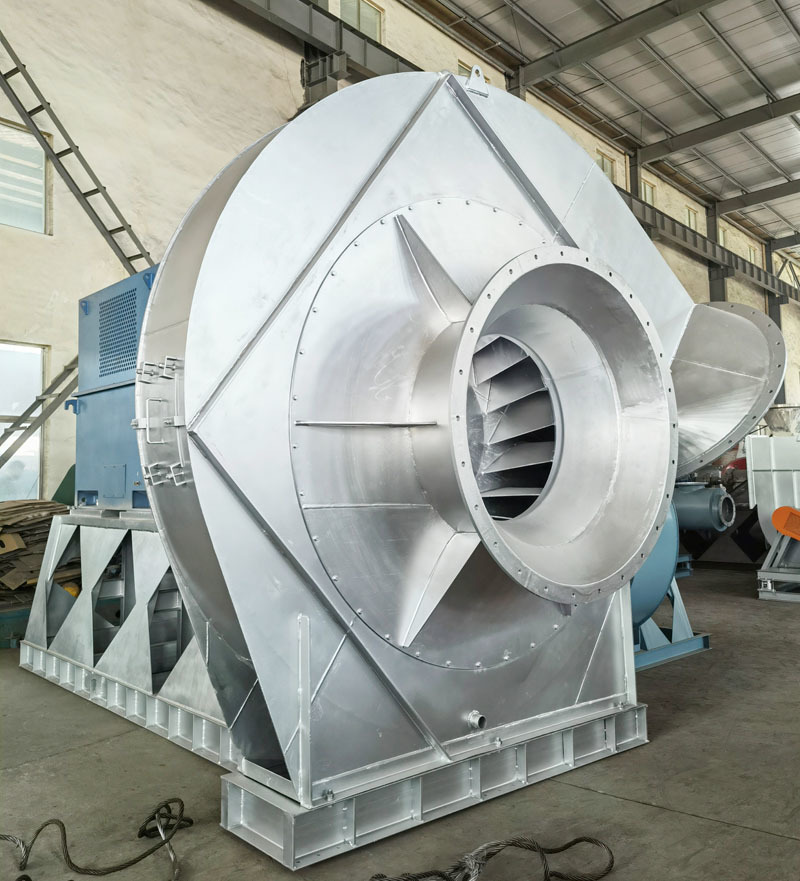What are the characteristics of the structure of a high-temperature fan?
Release time:
2022-04-09
The differences in high-temperature fans mainly lie in the materials. Unlike ordinary fans, they are mostly made of high-quality galvanized sheets. Let's take a look at their differences together. High-temperature fans are mainly composed of an impeller, casing, air inlet, motor, connector, and cooling blades, among other parts. Each part may vary slightly. If you don't believe it, keep reading.
High-temperature fanThe main differences lie in the materials; unlike ordinary fans, it is mostly made of high-quality galvanized sheet. Let's take a look at their differences together. The high-temperature fan mainly consists of an impeller, casing, air inlet, motor, connector, and cooling blades. Each part may vary slightly. If you don't believe it, keep reading.

I. Structural characteristics of high-temperature fans
1. Impeller
It uses a multi-blade single-inlet centrifugal impeller made of high-quality galvanized sheet or cold-rolled steel plate, designed based on aerodynamic principles. It consists of 10 backward-inclined airfoil blades, a curved front disc, and a flat rear disc. Made of high-quality steel plate, it has high data strength, good durability, and has undergone strict dynamic and static balance correction. It has good air performance, high efficiency, and runs smoothly.
2. Air inlet
The air inlet adopts a converging streamline vortex reduction method, resulting in low airflow loss,High-temperature fanand high operational efficiency.
3. Accessories
The casing of the high-temperature fan is connected to the motor through a metal casting device, with the motor's shaft end equipped with cooling blades. The outer wall of the metal casting has water inlet and outlet pipe interfaces to cool the metal casting and shaft end, ensuring the motor operates normally at high temperatures.
4. Engine
The motor is a special high-temperature motor, and the fluid part of the high-temperature fan is made of temperature-resistant materials, with a reliable cooling structure. Compared to other boiler induced draft fans, it has advantages such as simple structure, convenient protection, and high cost-effectiveness.
5. Appearance
It has a lightweight structure, attractive appearance, low noise, high static pressure, and corrosion resistance. Materials such as stainless steel, PP, and ordinary A3 spray coating can be selected.
II.High-temperature fanPerformance characteristics
1. Energy-saving
The high-temperature fan uses air storage and direct coupling technology, with an efficient impeller and permanent magnet DC motor, resulting in minimal friction. It automatically adjusts the motor's energy consumption to output (adjustable airflow is 40-100%) to maintain system operation.
2. No vibration, low noise development
With air storage and direct coupling technology, the fan operates without vibration and does not require sound insulation. It is lightweight, does not require a special base, and the installation configuration of the high-temperature fan is simple and flexible.
3. No lubricating oil.
The fan uses air storage technology, eliminating the need for a lubricating oil system. It is suitable for special industries such as electronics, pharmaceuticals, and food, with air storage unit temperatures reaching 600, 851; all the drawbacks of the oil storage system are resolved.
4. Maintenance-free
Unlike traditional fans that require gears and oil storage, it uses many high-tech non-coupled and direct-connected wheels and motors. The intelligent operating system's main components are made of 7075 (aviation aluminum), improving user maintenance costs and the stability of the air supply system.
5. Comfortable control
Speed, pressure, temperature, and flow can be automatically controlled by a computer. Uncontrolled operations can be managed through constant pressure, loading, and overload. Flow rate can be adjusted by changing the impeller speed. The number of revolutions can be easily adjusted by changing the intake temperature and pressure.
Related News






